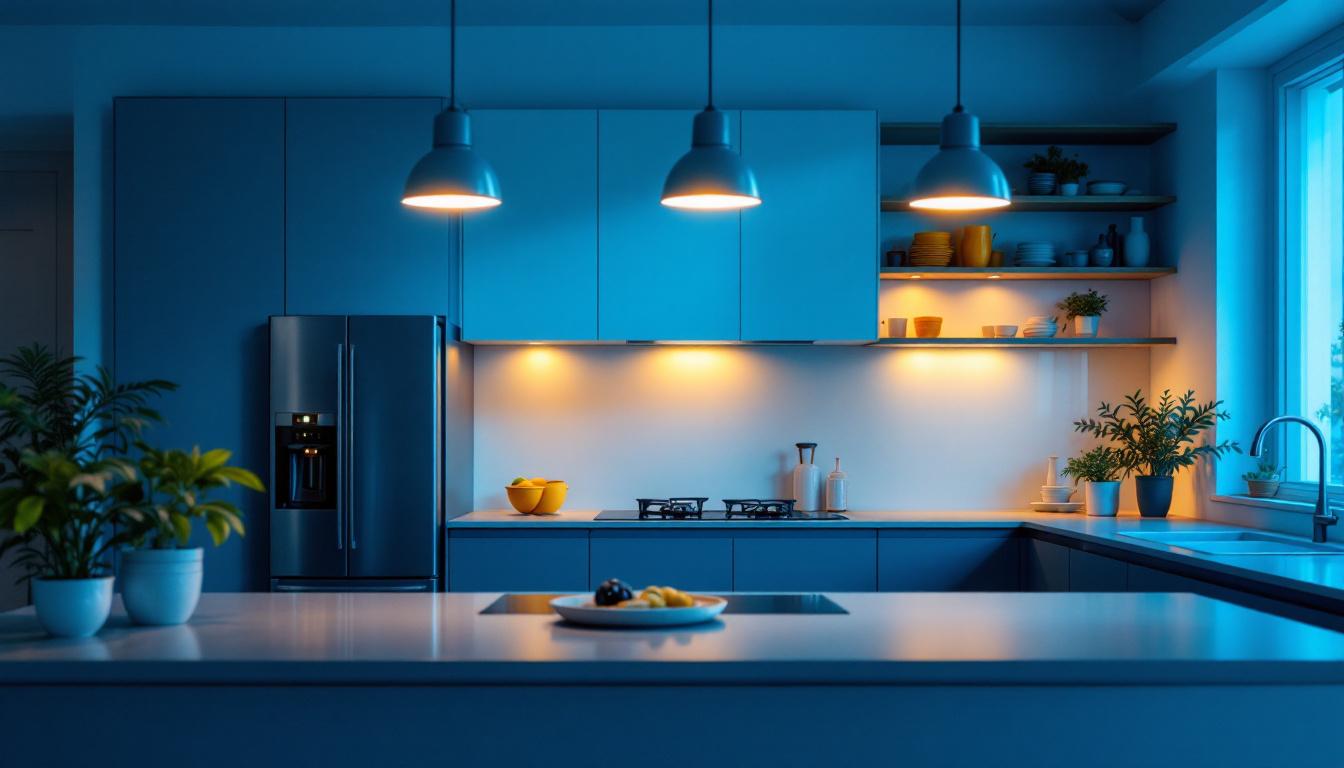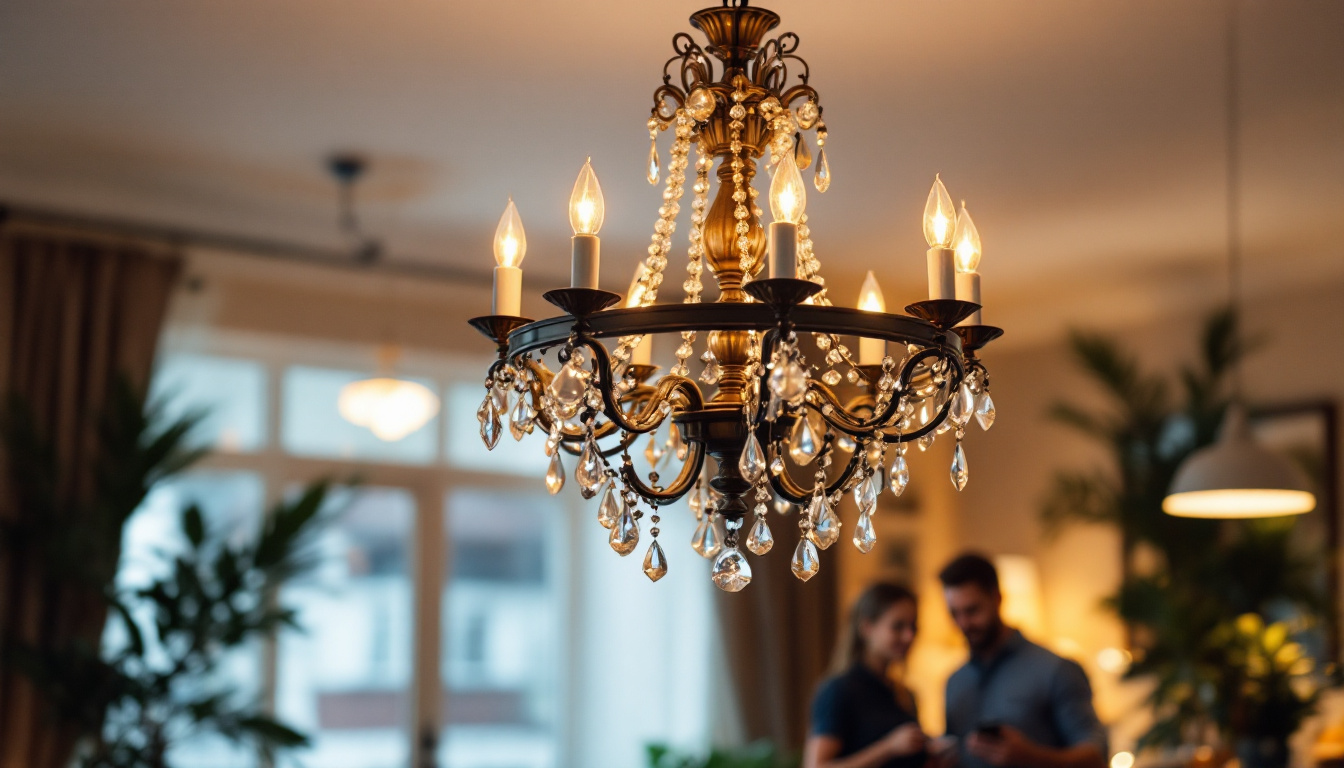
In the competitive landscape of lighting contracting, staying ahead means embracing innovations that meet client expectations for efficiency, aesthetics, and functionality. Kitchen LED can lights have emerged as a pivotal solution, transforming how kitchens are illuminated while offering contractors a powerful selling point to secure more projects.
The kitchen is often considered the heart of the home, where lighting plays a crucial role not only in visibility but also in ambiance and design. Traditional lighting methods, such as incandescent or fluorescent fixtures, are increasingly being replaced by LED technology, particularly recessed can lights. This shift is driven by homeowners’ growing awareness of energy efficiency, longevity, and customizable lighting options.
Recent studies indicate that LED lighting accounts for a significant and growing share of the residential lighting market. This is especially true in kitchen renovations and new builds, where homeowners prioritize modern, energy-saving solutions. For lighting contractors, understanding these trends is critical to tailoring proposals that resonate with client priorities.
Moreover, the versatility of LED can lights allows for seamless integration into various kitchen styles—from minimalist contemporary spaces to classic, cozy designs. This adaptability broadens the appeal to a diverse client base, enhancing contractors’ chances of winning contracts.
In addition to aesthetic flexibility, LED can lights offer advanced features that cater to the evolving needs of homeowners. Dimmable options enable users to adjust the brightness according to the time of day or occasion, creating the perfect atmosphere for cooking, dining, or entertaining. Furthermore, smart LED can lights, which can be controlled via mobile apps or voice-activated devices, are becoming increasingly popular. This technology not only enhances convenience but also allows for energy monitoring, helping homeowners manage their electricity consumption more effectively.
As sustainability continues to be a priority for many homeowners, the eco-friendly nature of LED lights also plays a significant role in their appeal. Unlike traditional bulbs, LEDs contain no harmful materials like mercury and have a much longer lifespan, reducing waste and the frequency of replacements. This commitment to sustainability resonates with environmentally conscious clients, making LED can lights not just a practical choice but also a responsible one. As a result, contractors who emphasize these benefits in their proposals are likely to attract a clientele that values both innovation and environmental stewardship.
When pitching lighting solutions, contractors must highlight the tangible benefits of kitchen LED can lights. These advantages not only improve client satisfaction but also streamline installation and maintenance, creating a win-win scenario.
LED can lights consume significantly less energy compared to traditional bulbs, often using up to 75% less electricity. This efficiency translates into lower utility bills for homeowners, a compelling selling point in an era of rising energy costs. Additionally, LEDs have a longer lifespan, reducing the frequency and cost of replacements.
For contractors, this means fewer call-backs and maintenance visits, enhancing reputation and client trust. Highlighting these savings in proposals can differentiate a contractor’s offering in a crowded market. Moreover, many local governments and utility companies offer rebates or incentives for installing energy-efficient lighting, further sweetening the deal for clients and making it an even more attractive option for contractors to promote.
LED technology offers superior color rendering and brightness control, allowing kitchens to be illuminated in ways that enhance both functionality and mood. Adjustable color temperatures—from warm to cool whites—enable homeowners to tailor lighting to their preferences, whether for cooking, dining, or entertaining.
Furthermore, dimmable LED can lights provide flexibility in ambiance, making kitchens more inviting and adaptable. Contractors who demonstrate expertise in specifying and installing these customizable options position themselves as knowledgeable professionals capable of delivering sophisticated lighting solutions. The ability to create zones of light using multiple fixtures can also enhance the overall design, allowing for task lighting over work areas while providing softer illumination in dining spaces, thus catering to various activities and preferences.
Recessed LED can lights are discreet and unobtrusive, preserving clean ceiling lines and maximizing headroom—an important consideration in kitchens where space can be limited. Their sleek design complements modern aesthetics, appealing to clients who value minimalist and uncluttered interiors.
Contractors can leverage this aesthetic advantage by showcasing completed projects or design mock-ups that emphasize the seamless integration of LED can lights, helping clients visualize the final outcome. Additionally, the versatility of LED can lights allows them to be installed in various configurations, from single fixtures to elaborate multi-light layouts, providing contractors with the flexibility to meet diverse design visions. This adaptability not only enhances the visual appeal of the kitchen but also allows for creative lighting solutions that can highlight architectural features or artwork, further elevating the overall design of the space.
To successfully win and execute contracts involving kitchen LED can lights, contractors must demonstrate technical proficiency and attention to detail. Understanding the nuances of installation and product selection is essential.
Not all LED can lights are created equal. Contractors should select fixtures that meet specific criteria such as appropriate lumen output, beam angle, and color temperature to suit the kitchen’s size and layout. For example, higher lumen outputs are necessary for task lighting over countertops, while softer lighting may be preferable in dining areas.
Additionally, selecting fixtures with appropriate ratings for damp or wet locations ensures safety and durability, especially near sinks or cooking areas. Familiarity with product certifications and compliance with local electrical codes builds client confidence and reduces liability.
Effective lighting design requires careful planning of fixture placement and spacing to avoid shadows and ensure even illumination. A common guideline is to space can lights approximately 4 to 6 feet apart, but this varies based on ceiling height and fixture specifications.
Contractors who provide detailed lighting plans, possibly incorporating 3D renderings or photometric analyses, demonstrate professionalism and a commitment to quality outcomes. This level of preparation can be a decisive factor in winning contracts.
Smart home technology is increasingly popular, and integrating LED can lights with smart controls can add significant value to a project. Features such as voice activation, remote dimming, and programmable scenes appeal to tech-savvy clients and enhance convenience.
Contractors knowledgeable about compatible smart lighting platforms and capable of seamless integration can position themselves as forward-thinking experts, differentiating their services in competitive bids.
Winning more lighting contracts requires more than technical skill; it demands effective communication and marketing strategies that resonate with potential clients.
Many homeowners may not fully understand the advantages of LED can lights or the variety of options available. Contractors who take the time to educate clients—through consultations, brochures, or digital presentations—build trust and empower clients to make informed decisions.
Demonstrating cost comparisons, energy savings, and showcasing before-and-after photos can make a compelling case. Testimonials and case studies from previous projects further reinforce credibility.
Providing tiered packages—from basic energy-efficient upgrades to premium smart lighting systems—caters to different budgets and preferences. This flexibility allows contractors to capture a broader market segment and upsell value-added features.
Clear, transparent pricing and detailed explanations of what each package includes help clients feel confident and reduce decision-making friction.
In today’s digital age, a strong online presence is vital. Contractors should maintain updated websites featuring kitchen lighting portfolios, client reviews, and educational content about LED can lights.
Positive online reviews and social media engagement enhance reputation and attract leads. Encouraging satisfied clients to share their experiences can organically boost visibility and credibility.
Examining real-world examples illustrates how embracing kitchen LED can lights can transform business outcomes for lighting contractors.
A lighting contractor secured a contract to upgrade a dated kitchen by proposing a comprehensive LED can light retrofit. By emphasizing energy savings and improved lighting quality, the contractor won the bid over competitors offering traditional fixtures.
The project included strategically placed dimmable LED can lights with adjustable color temperatures, integrated with a smart control system. The client praised the enhanced ambiance and functionality, leading to referrals and repeat business.
In a luxury home build, the contractor differentiated their proposal by incorporating premium LED can lights with customizable beam angles and finishes that complemented the kitchen cabinetry and ceiling design.
Close collaboration with the interior designer ensured seamless integration, and the contractor’s expertise in smart lighting systems added a modern touch that impressed the homeowner. The successful project boosted the contractor’s portfolio and led to additional high-end contracts.
For lighting contractors aiming to win more contracts, kitchen LED can lights offer a compelling combination of energy efficiency, design versatility, and technological innovation. By mastering the technical aspects, educating clients, and effectively marketing these solutions, contractors can differentiate themselves in a competitive marketplace.
Embracing kitchen LED can lights not only meets the evolving demands of homeowners but also enhances project profitability and contractor reputation. This strategic focus positions contractors to capitalize on current market trends and secure a steady pipeline of successful lighting projects.
Ready to elevate your lighting contracts with the efficiency and elegance of kitchen LED can lights? At LumenWholesale, we provide contractors with the high-quality, spec-grade lighting solutions you need to outshine the competition. Enjoy unbeatable wholesale prices and an extensive selection that adheres to the highest industry standards. With free shipping on bulk orders, you can trust that you’re getting premium lighting at the best value — all without hidden fees or compromises. Make the smart choice for your business and visit LumenWholesale today to discover how we can help you win more contracts with superior lighting solutions.

Discover the answers to lighting contractors’ most frequently asked questions during a chandelier sale.

Discover effective strategies for training your team on the importance and operation of exit signs with emergency lights.

Discover how a 4 foot fluorescent bulb impacts lighting contractors’ projects, offering energy efficiency, cost savings, and improved illumination—boost your expertise today!.

Discover the must-have tools and techniques for lighting contractors to create stunning solar light walkways.